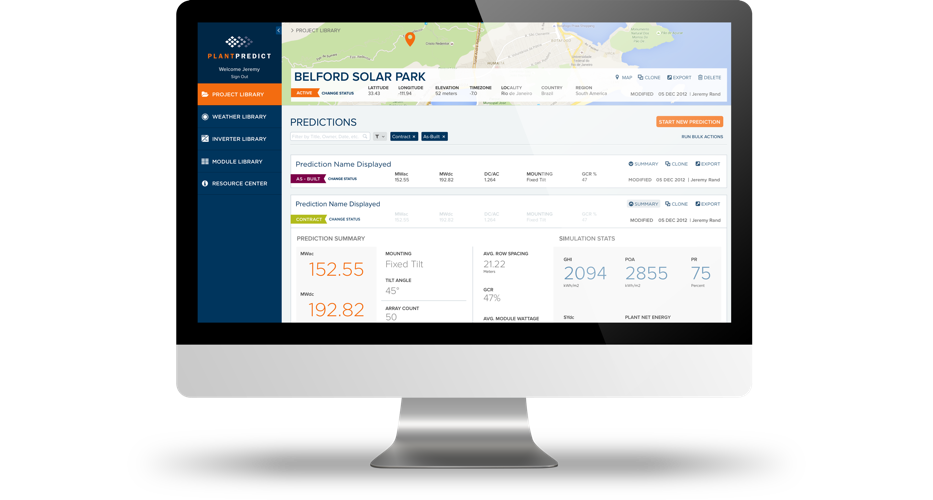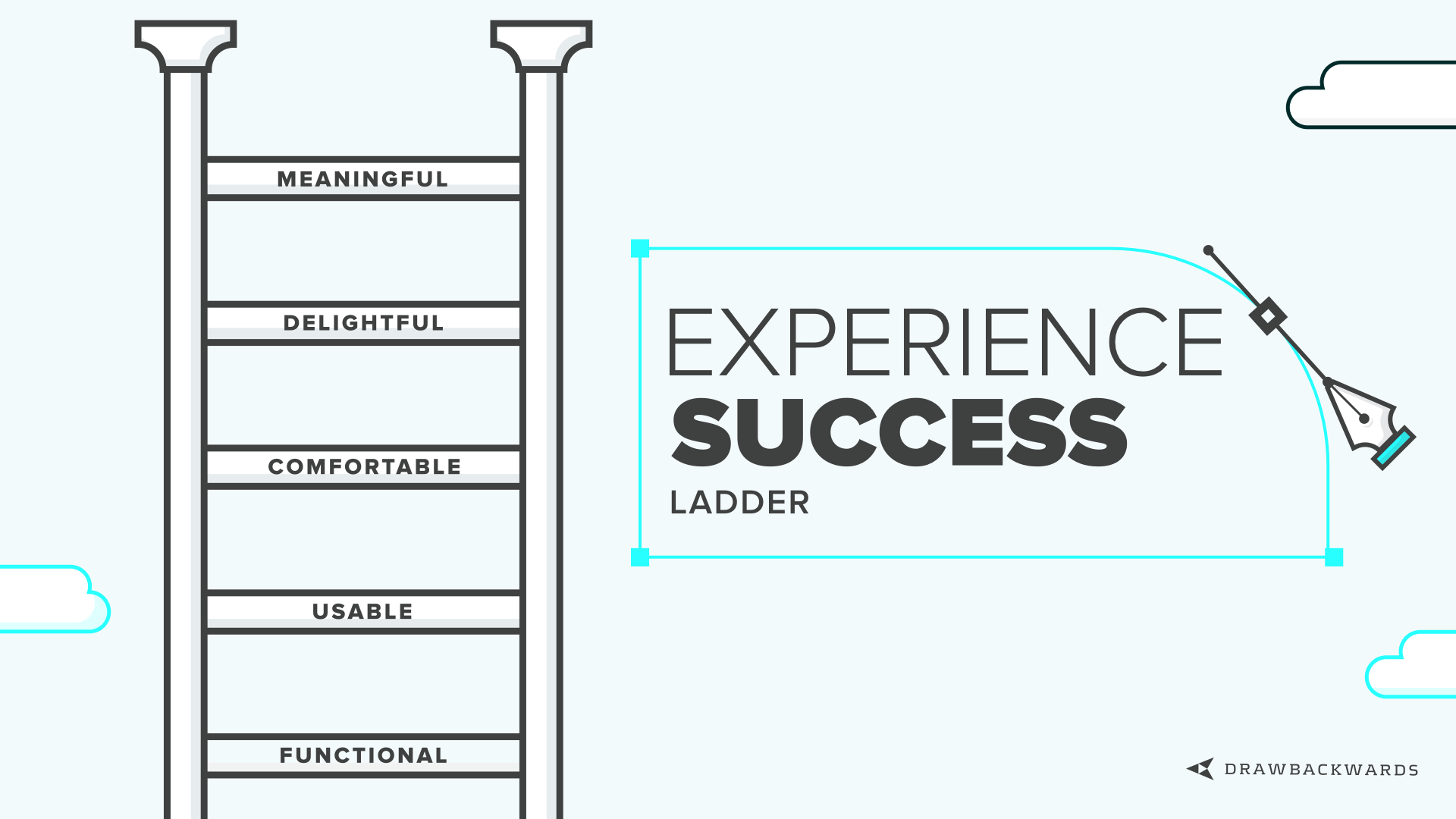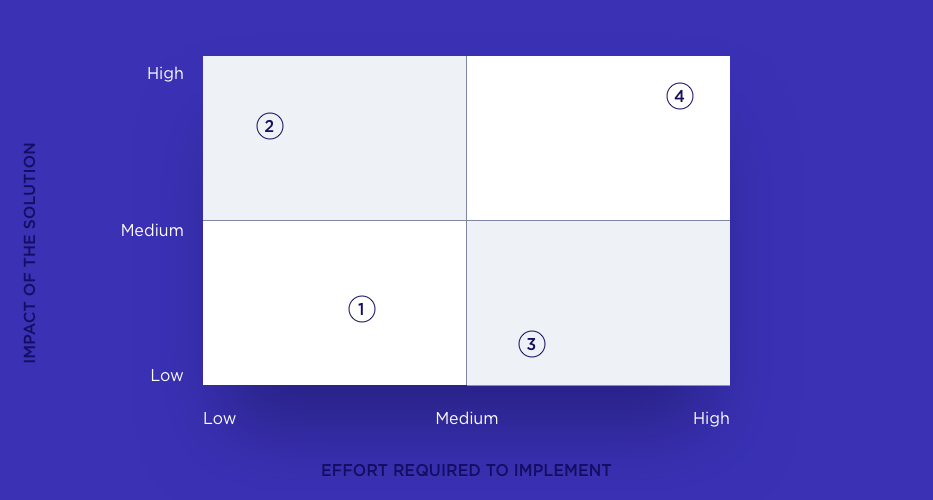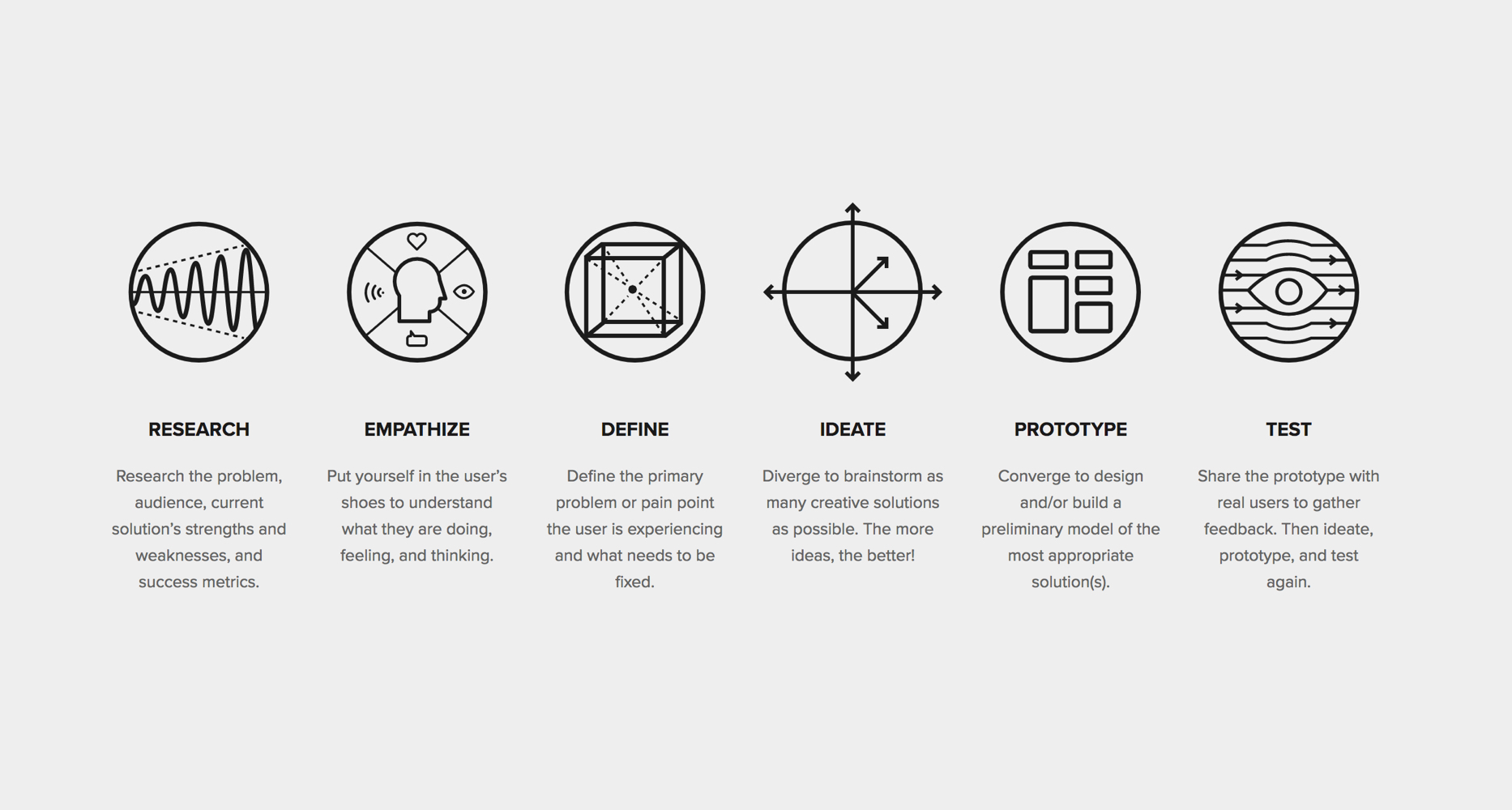Enterprise UX Design: Unlocking ROI from the Inside Out

Imagine if the primary tool you used to do your job were 150% faster to operate and improved accuracy to the point where it produced tens of millions of dollars in additional sales and cost savings. That would be pretty amazing for both you and your company, right?
It doesn’t have to be a wish. It could be a reality with enterprise UX design. Savvy organizations are taking the principles and techniques for designing external user experiences and applying them to internal user experiences: the products and services employees and stakeholders use to do their job.
Internal Experiences Have External Impact
It’s well understood that better design improves the customer experience and drives huge returns for a company. The same goes for the experience design of internal operations. From marketing, to product design, to operations, and more, teams across the enterprise are realizing that the highest ROI and the best way to build a competitive advantage in the modern economy is through ever-improving UX.
The highest ROI and the best way to build a competitive advantage in the modern economy is through ever-improving UX.
Take First Solar, a global solar leader that recently redesigned their internal estimation process, creating a new industry-leading tool with the help of our team at Drawbackwards. When First Solar is bidding on new power plant projects, they rely on their engineers to estimate how big the plant should be and how many solar panels it will require. Accuracy is imperative, or they’ll lose the contract before it begins.
However, the software estimation approach their engineers (and everyone else in the industry) relied on to create those energy predictions was beyond difficult and time-consuming to use, and it produced inaccurate results. They needed the tool to simulate energy output for a wide range of large-scale commercial power plants, each with multiple types of technology, but the industry-standard approach was not built for that purpose. As a result, each simulation took three hours or more to complete, left engineers frustrated, and was only accessible on one device – an inconvenient and risky set-up for workers who are constantly on the move.
In our personal lives, we’ve all experienced what it’s like to use a great product vs. a mediocre or bad product. They’re easier and more enjoyable to use, so we’re likely to pay more, stay loyal, be more forgiving if something goes wrong, and recommend them to our friends. These same principles apply in the enterprise.
By working side by side with Drawbackwards’ team to design a new cloud-based solar energy prediction tool called PlantPredict that produced undeniable results quickly, First Solar was able to make a huge impact on their staff’s productivity and happiness, as well as the company’s bottom line:
- Cut production time from 3 hours to 30 minutes
- Achieved 100% internal adoption within one month
- Increased intuitiveness, creating higher user satisfaction
- Improved accuracy, leading to a higher close rate for new business, greater ability to bid on high-profile projects, and lower risk of misallocation
- Created a cloud-based solution that could be used anywhere, anytime, without the risk of losing data
- Increased ability to compare First Solar data to industry benchmarks, understand field performance, and improve algorithms
- Generated hundreds of thousands of dollars in time savings, plus greater opportunity for driving revenue in the future
- Won the CEO’s Business Enablement Award for the project that had the largest impact on the business in 2016
Improving Enterprise UX with the Experience Success Ladder
In our personal lives, we’ve all experienced what it’s like to use a great product vs. a mediocre or bad product. They’re easier and more enjoyable to use, so we’re likely to pay more, stay loyal, be more forgiving if something goes wrong, and recommend them to our friends.
These same principles apply in the enterprise. When internal products climb the Experience Success Ladder and become more comfortable, delightful, and meaningful to use, they spark massive savings and increase satisfaction.
The Experience Success Ladder serves as a high-level tool for assessing the value a product or service provides now, plus goals to aspire to. By moving from one rung to the next, you’re not only better meeting your users’ needs, but also increasing your company’s likelihood of success.
When internal products climb the Experience Success Ladder and become more comfortable, delightful, and meaningful to use, they spark massive savings and increase satisfaction.
Enterprise organizations that buy off-the-shelf, pre-configured software or implement products without considering user needs often find they don’t work as well as expected, leading to:
- Employees feeling lost and discouraged, resulting in dissatisfaction and attrition
- Wasted time and budget on purchase, implementation, training, and more
- Failure to meet objectives because staff can’t complete their tasks efficiently or at all
- Employees developing their own “hacks” or workarounds
- Lost opportunities to provide great customer service because employees are stuck just trying to get the basic software functionality to work
On the other hand, companies that invest in the user experience of their internal systems and products often see massive results, including:
- Higher productivity and time savings
- Higher employee satisfaction
- Higher employee retention
- Higher external KPIs (such as Net Promoter Score, customer satisfaction ratings, churn, operating costs, sales, and revenue) due to better customer service
Three Enterprise Departments that Get the Most Value Out of UX
While enterprise UX design can deliver meaningful results organization-wide, there are three departments that often see the greatest benefit:
- Product: Improving the experience of using software and systems so employees and customers get what they want, how they want it
- Marketing: Clarifying and reinforcing the brand story, messaging, and content to deliver a stronger, clearer, more aligned message that improves the customer experience and drives growth
- Operations: Optimizing operational tools (e.g., call center software, business intelligence and analytics tools, CRMs, etc.) to save time, gain access to better information, and improve KPIs
While enterprise UX design can deliver meaningful results organization-wide, there are three departments that often see the greatest benefit: Product, Marketing, and Operations.
For example, consider a call center within a company that sells a subscription-based product. The call center receives dozens of inquiries every day from members who need to update their credit card number. The process to update a credit card number is functional and usable for customers, but because it requires them to call in, it’s not necessarily comfortable and definitely not delightful or meaningful.
It’s also a pain for call center representatives. Although these are easy requests to resolve, they take up precious time that the employee could be using to solve more important problems or drive new sales. For example, in a recent project, Drawbackwards was able to quantify that a difficult workflow for updating billing information was costing a SaaS client $100,000 in annual operational costs alone.
What if customers could easily update their credit card with a self-service option, or if the call center software had a faster, more automated way to update the number? Eliminating this one small pain point will pay major dividends in time savings, satisfaction, and retention for both sides. Plus, the company would reinforce their brand message that their customer experience is easy and enjoyable. It’s a win-win for Marketing, Product, and Operations.
The Enterprise UX Design Process
Improving enterprise UX has massive pay-offs, but it doesn’t have to be a massive undertaking. Tons of value can be uncovered with just a bit of research, planning, and a few minor fixes.
For example, here’s how our team at Drawbackwards typically starts an engagement with our enterprise clients:
1. Ride-along with users.
We start by sitting with your employees and observing their workflow during a “ride-along” or “field study.” UX expert Jared Spool says,”While techniques, such as focus groups, usability tests, and surveys can lead to valuable insights, the most powerful tool in the toolbox is the ‘field study’. Field studies get the team immersed in the environment of their users and allow them to observe critical details for which there is no other way of discovering.”
It’s amazing how much insight you can gather just from observing employees (or anyone) in their natural environment, even just for a few minutes. Through this process, we gain a better understanding of their processes, terminology, the external and internal forces that affect their work, and more.
The ride-along exercise is hugely helpful due to a number of factors:
- It’s hard for people to describe their process, and they may not even realize some of the smaller steps that are required to get the job done. It’s much easier for them to actually show how they complete tasks.
- They may overlook UX gaps or opportunities for improvement since they work so closely with their products and processes every day.
- Gaining empathy and walking a mile in the user’s shoes is the fastest, best way for designers to create a great solution to their problem. When we understand the context of their situation and the pain points they’re feeling, the ideas start flowing.
It’s amazing how much insight you can gather just from observing employees (or anyone) in their natural environment, even just for a few minutes.
2. Develop an inventory of issues.
After the ride-along, we typically have pages of notes and ideas. From there, we create an inventory or backlog of UX challenges that can be resolved, organized by theme. This step helps distill and organize all of the ideas, evaluate which ones to pursue, and turn the list into an actionable plan.
Create an inventory or backlog of UX challenges that can be resolved (organized by theme) to distill and organize all of the ideas, evaluate which ones to pursue, and turn the list into an actionable plan.
3. Prioritize the inventory.
Next, we split the inventory into near-term and far-term fixes based on the amount of effort the task will take and the amount of impact it will have on the company’s goals and users’ needs. Using an “Effort vs. Impact” chart or scoring system makes this process simpler and more objective.
Pro tip: We typically recommend starting with a few near-term fixes first. This helps add value quickly and gain buy-in from other stakeholders before tackling bigger fixes that will produce even more ROI, but also will take more time and budget to complete. For example, moving or renaming a button in call center software or reorganizing the tabs in a CRM can shave seconds to minutes off a call or sales workflow, leading to huge ROI quickly.
Start with a few near-term fixes first to add value quickly and gain buy-in from other stakeholders before tackling bigger fixes that will produce even more ROI, but also will take more time and budget to complete.
4. Start the design and development process.
Then, the design thinking and development process kicks off, beginning with understanding business objectives and user tasks and needs. Work quickly moves to creating flow charts that reflect the product’s current and optimal workflow. After evaluating the gap between the current and optimal workflows, we can work with the internal IT and Operations teams to either design and develop a custom solution, or see what changes can be made to the existing integration to bridge that gap.
Instead of diving into design and development based on what solution would make the most sense for the business, we “draw backwards” and start with user needs research and empathy. One of the biggest UX mistakes many enterprises make today is choosing an off-the-shelf solution so they can deploy as quickly as possible to try and make an impact on corporate objectives. But if you truly want to get ROI out of an enterprise software package, you need a solution that employees will actually use to its fullest. The best way to accomplish that goal is talking to users and observing their process so you can implement a product that meets their needs.
Pro tip: Send out a UX Rings survey to employees who use the tool you’re redesigning to get focused feedback from users and set baseline metrics to measure future UX improvements. (Keep in mind your UX Rings scores may be low in the beginning because the tool is purposely designed to be aspirational and set a high bar.)
One of the biggest UX mistakes many enterprises make today is choosing an off-the-shelf solution so they can deploy as quickly as possible and try to make an impact on corporate objectives. But if you truly want to get ROI out of an enterprise software package, you need a solution that employees will actually use to its fullest.
Enterprise UX Design is the Key to Unlocking ROI
UX design is not about making something look good. It’s a key component of the entire corporate strategy. When John Maeda was hired as the first design partner at the VC firm KPCB, he said:
“My role isn’t to fix pixels–which is hard work on its own of course. My role is to find strategic insights as to where design can have the most business impact. A designer can bring a viewpoint of not just aesthetics, but economics and usage.”
The businesses that are winning today are embracing this shift. They understand the world and discipline of design have evolved, and they need to evolve with it. It’s not about adding features – it’s about deciding what to leave out. It’s not about making a product look better – it’s about making it work better and adding more value for its users. And most of all, it’s not about one moment or interaction – it’s about the overall experience.
This is also the role Drawbackwards plays: as a strategic advisor to business leaders. We identify the ROI around UX. We develop a UX plan for the organization. We also apply “fix-pixels” execution.
Designing comfortable, delightful, meaningful products is hard, but it’s everything. Intentionally designed experiences around user needs change lives, companies, industries, and the world as we know it. If you’re truly looking to help your workforce be more productive, your customers feel more satisfied, and your company be more competitive, the only way to do that is to design user-centric, unique, superior experiences.
Feeling fired up and ready to improve the experience for your organization? Our team at Drawbackwards has worked with hundreds of enterprises to help them design experiences that unlock millions of dollars in ROI and leapfrog the competition. Get in touch to learn how we can help do the same for you.



